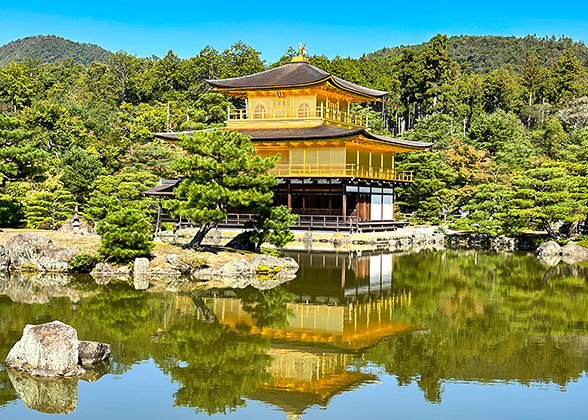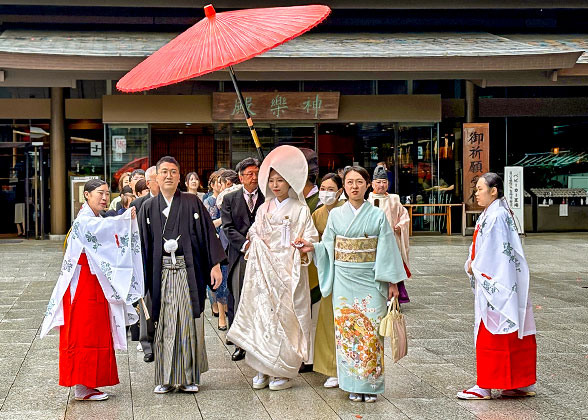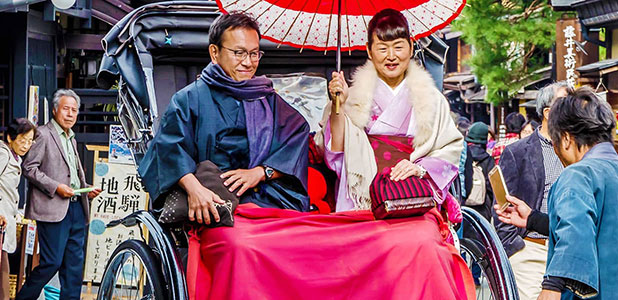Imperial Palace
Imperial Palace is located in the center of Tokyo, surrounded by a wide moat and stately walls. The Palace is the residence and office of the emperor of Japan, just like the White House in the United States and the Elysee Palace in France. In general, the palace is divided into three parts, namely East Gardens, Outer Gardens, and Inner Palace, and you can visit the palace for free. However, the Inner Palace is only open on special days.

Imperial Palace Photos ( 9
|
The History of the Imperial Palace
The Imperial Palace was once a part of the Tokugawa shogunate's castle. It has become the Imperial Palace since Emperor Meiji (1852-1912) moved here in 1868, and four emperors have lived here since then. The current buildings in the palace were rebuilt after the World War II. Now, the Japanese emperor still lives here and carries out daily affairs. Besides, the emperor's succession ceremony is held here. On May 1, 2019, Japan's new emperor, Crown Prince Naruhito, aged 59, ascended the throne here.What to Do in the Palace
1. Take a Picture of Nijūbashi Bridge

Nijūbashi Bridge in Inner Palace
|
Tips:
2. Take Part in a Sightseeing Tour of the Inner Palace
The Sightseeing Tour allows tourists to enter the Inner Palace to look over some areas that are not open to the public regularly. Tour services are offered twice a day from Tuesday to Saturday, providing English guides. The number plates are issued at 9 am for the sightseeing tour, and the tour starts at 10 am. In the afternoon, number plates are issued at 12:30 pm and the tour starts at 1:30 pm. The whole sightseeing process takes about 1 hour and 15 minutes, and the tourists need to gather in front of the Sakurada Gate before the tour. The visitors who visit the Inner Palace are guided by a special person. And under the lead of the expositor, visitors are not allowed to walk around at will, because it is very close to the emperor's residence. Some expositors may hold brochures with varied pictures in hand to tell you about the history of the inner buildings in detail. Besides, you can buy some gifts in the souvenir shop in the Inner Palace before the tour, like Japanese wine, desserts, and handkerchiefs printed with the chrysanthemum crest of the imperial family.Tips:
Main Buildings to See during the Inner Palace Sightseeing Tour
1. Hasuikebori (Lotus Moat) allows visitors to enjoy the large lotuses from June to August.2. Fujimi-yagura (Mt.Fuji-view Keep) is a tall building from where one can look afar Mount Fuji. However, visitors are not allowed to enter it and can only see it from the outside.
3. Kyuden (The Imperial Palace) refers to the buildings where the emperor lives and deals with affairs.
4. Seimon-tetsu-bashi Bridge (Niju-Bashi) is a good place to take pictures and you can walk on the bridge during the tour.
|
|
|
3. Have a Look at the Biggest Gate of the Imperial Palace
Sakurada Gate was built in 1612 and is the largest gate to the Imperial Palace. The gate, made of heavy wood, Iron sheets, and nails, reveals the traditional Japanese architectural style. You can try knocking on it.
4. Appreciate the Statue of Kusunoki Masashige
Kusunoki Masashige is a famous Japanese general, and his statue here is one of the three major bronze statues in Tokyo. You can find the statue in the southeast side of Outer Gardens. The general with armor is riding a big vivid horse, and you can observe the strong muscle of the running horse.5. Explore Ninomaru Garden

Imperial Palace in Autumn
|
Approximate Visit Time
About 2~3 Hours. Suppose you only plan to explore the outer reaches of the palace, 1~2 hours are enough.How to Get to Imperial Palace
1. Take the Tokyo Metro Chiyoda Line, and get off at Nijūbashimae Station.2. Take the Tokyo Metro Hibiya Line, and get off at Hibiya station.
3. Take the Toei Subway Toei Mita Line, and get off at Get off at Otemachi Station.
4. Take the JR Yamanote Line, and get off at Tokyo Station.
Travel Advice
After visiting the ancient and elegant palace, you can explore the modern buildings in Ginza. You can walk here from the Imperial Palace, which takes about 22 minutes. Ginza is one of the most bustling areas in Tokyo, with numerous luxury stores and department stores. Remember to take a picture in front of the Wako Tower on Ginza.
Read more:
You May Like
-
 7 Days Mini Group Tour with Highlights of Japan: Tokyo - Mt. Fuji - Kyoto - Nara - Osaka from USD2155
7 Days Mini Group Tour with Highlights of Japan: Tokyo - Mt. Fuji - Kyoto - Nara - Osaka from USD2155 -
 11 Days Mini Group Tour to Tokyo - Hakone (Mt. Fuji) - Kyoto - Nara - Osaka - Hiroshima - Kanazawa - Shirakawa-go - Takayama - Tokyo from USD3554
11 Days Mini Group Tour to Tokyo - Hakone (Mt. Fuji) - Kyoto - Nara - Osaka - Hiroshima - Kanazawa - Shirakawa-go - Takayama - Tokyo from USD3554 -
 13 Days Japan Private Tour of Tokyo - Kamakura - Tokyo - Mt. Fuji - Kyoto - Nara - Hiroshima - Osaka from USD4443
13 Days Japan Private Tour of Tokyo - Kamakura - Tokyo - Mt. Fuji - Kyoto - Nara - Hiroshima - Osaka from USD4443


